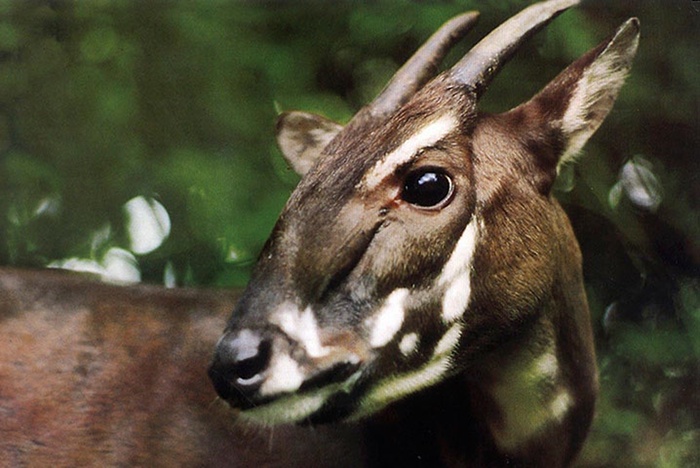
From giant canopy-dwelling stick insects, to a mysterious spiny anteater in the Cyclops Mountains, onto otherworldly tentacles in the deepest depths of the ocean buried; there are plenty of species that we know almost nothing about, despite our best efforts.
In some cases, the species is almost certainly extinct and just a handful of remaining specimens in museums around the world must tell their tragic story. Yet for others, hope remains, whilst conservationists face a race against time to learn more in order to save some of the planet’s most elusive wildlife. Delve into the list below to discover just how little we know.
Chan’s Megastick (Phobaeticus chani)

Photo by P.E. Bragg
They don’t get much stranger than the longest stick insect in the world. Discovered in 2008 in Sabah, Borneo; there are only six known specimens.
Thomas’s Racer (coluber thomasi)
One of the problems of rare and poorly known species, is that often very few photographs exist. This snake, named after the famous Arabian explorer Bertram Thomas, lives in the remote Dhofar mountains of Oman and Yemen. It has been seen barely a dozen times since discovery in 1932. That’s all we know.
The Somali Golden Mole (Calcochloris tytonis)

Sometimes new species are described from only partial specimens. This is certainly the case with the golden mole, known only from a fragment of jawbone and ear bones discovered in an owl pellet back in 1964 (the mole had obviously been lunch). The bones were sufficiently different from all other known golden moles to be defined as a new species.
Attenborough’s Long-Beaked Echidna (Zaglossus attenboroughi)

Photo by JJ Harrison
Named after Sir David himself, this enigmatic and mysterious echidna, or spiny anteater, is known only from a single badly damaged specimen, collected sometime around 1961 from deep in the Cyclops Mountains of New Guinea. In 2007 an expedition set out to see if it still survives, but the evidence was inconclusive.
Stephens Island Wren (Xenicus (Traversia) lyalli)

Legend has it, that this is the only species to be wiped out by a single living being – a lighthouse keeper’s cat named Tibbles, on a remote island back in the 1890s. In fact, it was the lighthouse keeper David Lyall who first thought it might be a new species. By the time they realised, it was too late. Only 15 preserved specimens remain, dispersed in collections around the world.
The Liverpool Pigeon (Caloenas maculate)

Drawing by Joseph Smit (1898)
Presumably having long ago become extinct, this mysterious ‘Liverpool Pigeon’ is known from a single specimen deposited in the Liverpool World Museum. Scientists think it was most likely collected from somewhere in French Polynesia more than 200 years ago, but exactly where we are unlikely to ever know.
The Saola (Pseudoryx nghetinhensis)

Amazingly, this species was only discovered in 1992, having remained hidden from the outside world in a remote part of the Laos-Vietnam border. Only a handful of outsiders have ever seen one alive, and tragically the only Saola brought into captivity died shortly afterwards. Conservationists are desperately trying to learn more in order to save it from extinction, meanwhile, it is most likely critically endangered and balancing on the brink of extinction.
The Dusky Flying Fox (Pteropus brunneus)
Another species known only from a single specimen, likely collected on the Percy islands of Australia in 1859. No further specimens have been identified since. The status of this species is unknown, most likely extinct.
El Copé Giant Salamander (Bolitoglossa copia)

Photo by Matt Knoth / Shutterstock
More optimistically, though only known from a single specimen, this salamander is classified as data deficient by the IUCN. Endemic to a remote area of Panama, it is hoped that further exploration will reveal that a healthy population still survives.
Pyrosome

Photo by Greg Amptman
A pyrosome is actually the name given to a colony of animals called zooids. They occasionally form these elegant and mysterious tentacle-like colonies growing up to 60ft long. Rarely seen and even more rarely filmed, we know almost nothing about their lives drifting on ocean currents.
One can’t help but wonder how many as yet undescribed species lie unknown in museum drawers or remote forests, mountains and oceans around the world.

